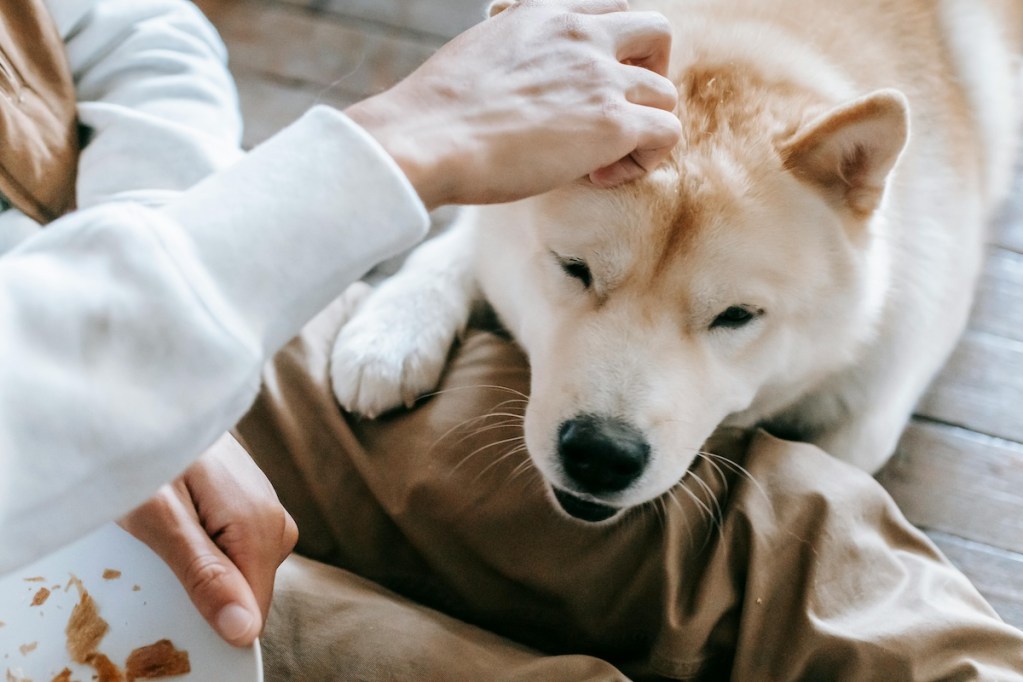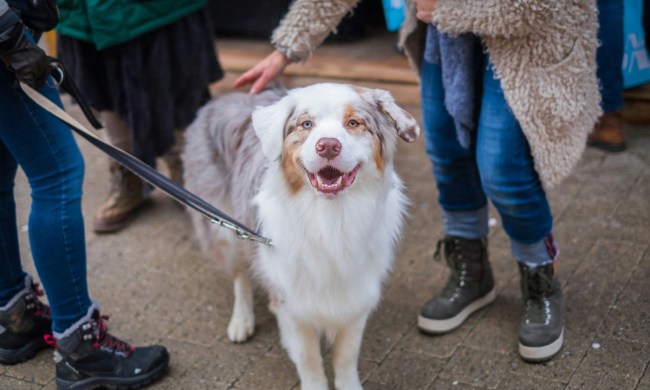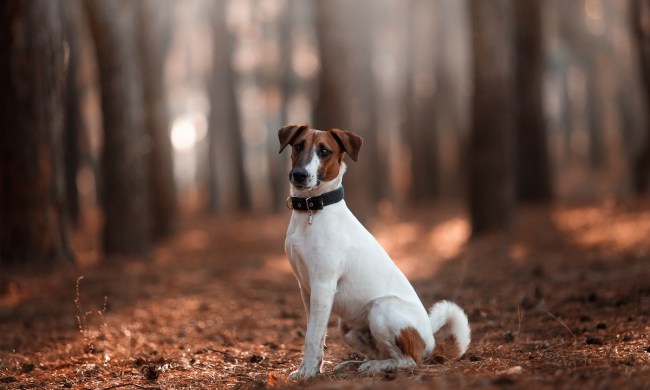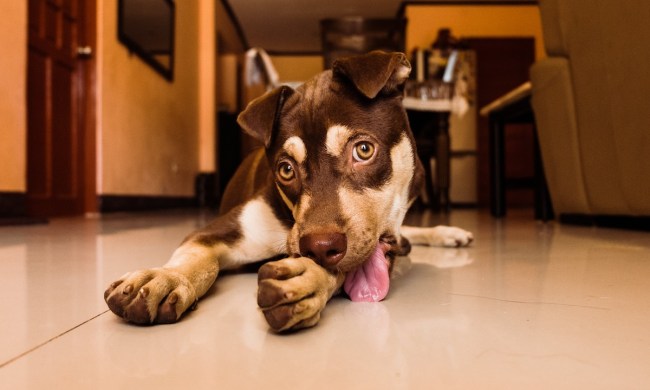Snuggles and unconditional love were likely part of the reason you brought home your furry friend in the first place. You may have envisioned yourself scratching their ears and spending nights petting them after a long day at the office. You may not have expected that the bed you splurged on would be tossed aside in favor of your lap. You may wonder, “Why does my dog lay on me instead?”
Dog-human relationships are as sweet as they come, but a language barrier complicates them. Your pet can’t answer this question for you, but we have some theories. The good news? Unlike other common dog behavioral questions, chances are, the reason your dog has chosen you as their favorite pillow is a positive (and sweet) one.
Why does my dog lie on me?

Your dog may love snuggling up to you for several reasons, from love to mental or physical health concerns. Generally, a dog lying on a human is not a problem to fix (unless you’re super uncomfortable, as may be the case with a Great Dane). However, sometimes, this behavior can be a flag that something is amiss, so calling your vet with questions or concerns never hurts. Let’s dig into some common reasons your pet has decided you are their favorite resting spot.
Pack mentality
You can take the dog out of the wild, but you can’t take the wild out of the dog. Pups have been domesticated for more than a century. However, their ancestors roamed in packs. When they weren’t hunting or standing guard, ancient dogs snuggled close to keep one another warm and cozy during sleep. These days, you’re part of your dog’s pack — consider the cuddles a compliment.
They love you
You are your dog’s person — the most important part of their lives. You feed them, buy them toys, and keep them safe. Of course, your dog loves you, and cuddles are a way of showing affection.
Your dog wants something
Dogs have innocent hearts, but they’re not above bribery. Similar to a human child, a dog may “suck up” by lying on you if they want something, like a treat. Other times, they may be telling you that they need to pee, you forgot to feed them dinner, or they aren’t feeling well. If you notice other flags like changes in appetite or energy, your pup might be sick — a call to the vet is your best bet to ensure everything is OK.
Dominance
Sometimes, dogs want to dethrone you as the alpha and become the pack leader. Lying on top of you is their way of trying to show that they’re “top dog.” A dog trainer can help you firmly but kindly exert your place as a pack leader through positive reinforcement rather than yelling and punishment. This approach helps preserve the incredible human-dog bond.
Fear or anxiety
Alternatively, dogs may be fearful of something — a loud noise or an unfamiliar person in the home. Your body feels like home to your dog, and they look to you for protection. Dogs can also experience separation anxiety and may feel the need to be touching you whenever possible. Dogs with separation anxiety often chew inappropriate items (like shoes) and have accidents in the home while you’re away. Speaking with your vet and an animal behaviorist can help your dog feel OK when you aren’t around, knowing you’ll be home to cuddle eventually.
Marking territory
Your pet uses scent glands to rub against items — trees, fence posts, and yes, you. The goal? To mark their favorite place (or person) so no one else can intrude. When you’re not around, you may notice your dog lying on a shirt you left around or your bed just to be close to you (and mark something with your scent).
They’re worried about you
Dogs know how to read a room. If you’re feeling down physically or mentally, a dog may notice a change in your energy and lie down on you in an attempt to tell you it’ll all be OK.
What to do if your dog loves lying on you

Now that you know why your dog lies on you, what should you do?
- Nothing. If you enjoy the cuddles and your pet is healthy and happy, there’s no reason to try to curb this behavior.
- Call a vet. Should your dog display red flags like potty training regression or poor appetite, give the vet a ring to rule out physical or mental health challenges.
- Redirect. Perhaps you’d rather your 150-pound lapdog sit next to you than on you — no shame. Redirect your pet to their place and reward them with a high-quality treat or toy and plenty of praise (and pets).
- See a trainer. If the issue is behavioral, a trainer versed in positive reinforcement methods can help you reclaim your spot as pack leader gently but firmly.
Final thoughts

Dogs love lying on their humans. Generally, the reasons are positive — they love you and want to let you know. Sometimes, pups lie on humans to exert dominance or send a message that they aren’t feeling well. Call a vet if you’re concerned about your pet’s behavior or well-being. They can offer treatment or refer you to a trainer. Otherwise, a dog that loves to cuddle close isn’t one you need to “fix” — enjoy the snuggles and unconditional love.




